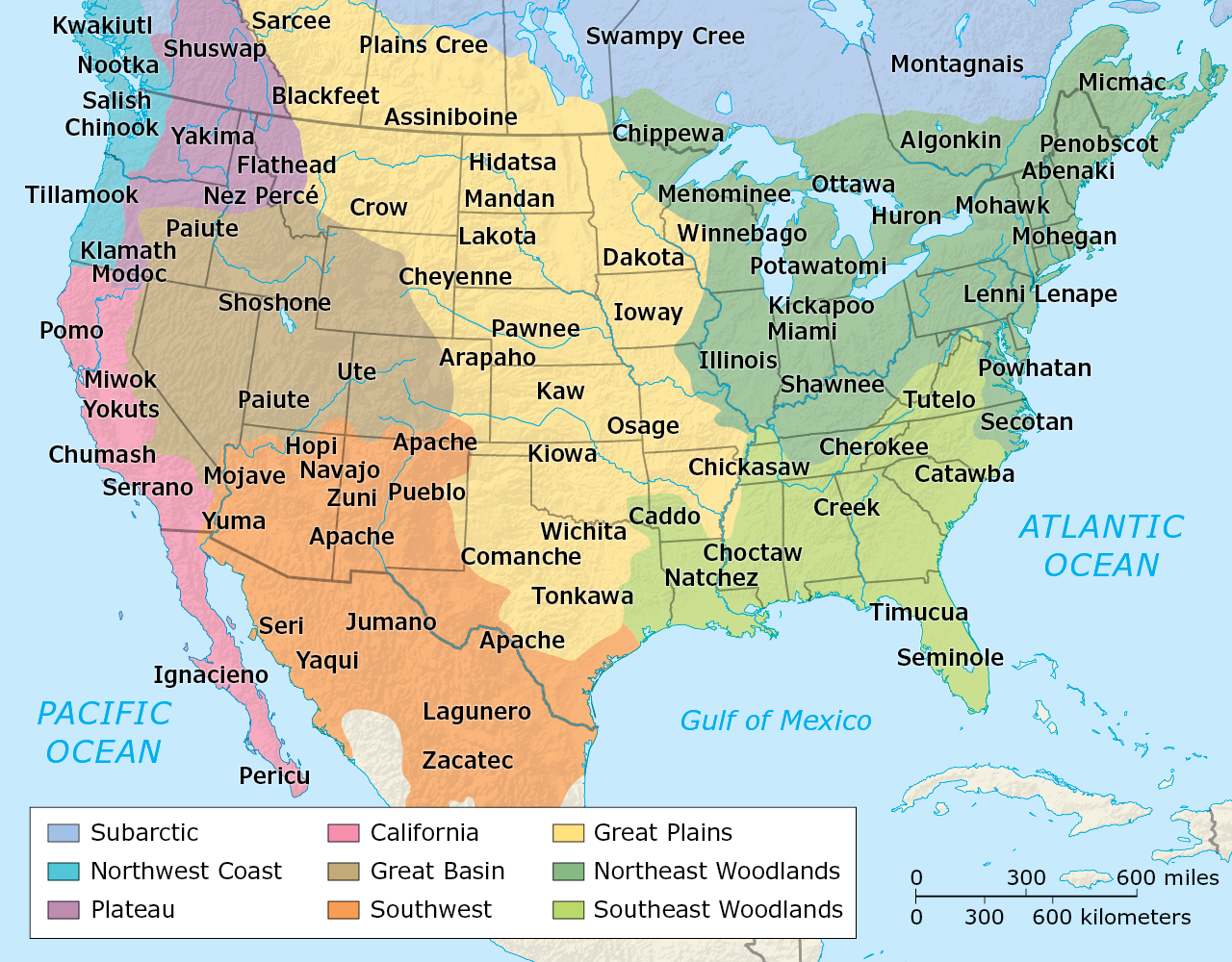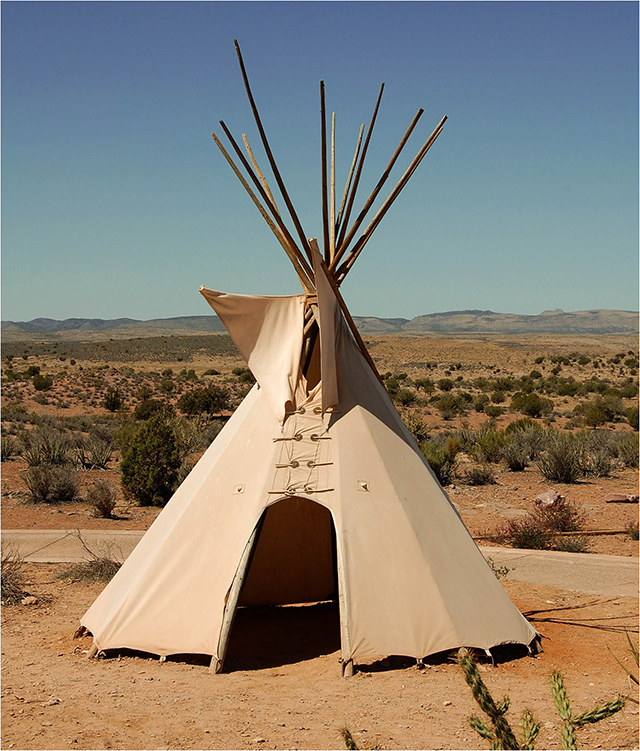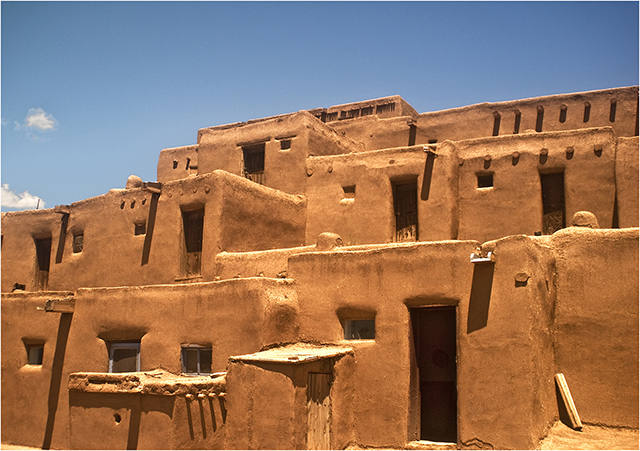1.3 The Indians of North America
-
What were the principal cultures of the Indians of North America?
The Potlach: Conspicuous Consumption among Northwest Indians
North of Mexico, in the region that would become the United States, nothing quite like the Maya, Aztec, or Inca civilizations emerged. Agriculture never developed as fully as farther south, and consequently the cities on which the civilizations depended never took root.
Map 1.3
Locations of North American Indian Cultures

The region that would become the United States was home to many Native American tribes and cultures. These included the Woodland peoples of the East, the Plains tribes of the center of the continent, and the distinctive cultures of the Southwestern desert and the Northwest coast.
Yet the peoples of North America developed distinctive cultures nonetheless. The Indians (to use the name the Spanish mistakenly applied to the indigenous peoples of the Americas) of the great central plains region were largely nomadic, hunting herds of bison, or buffalo, that migrated with the seasons. The Plains Indians originally tracked the buffalo on foot and forced or tricked them into going over cliffs. The fall would break the buffalos’ legs and render them easy prey to the hunters’ spears and arrows. Later the Plains tribes acquired horses from the Spanish and learned to hunt buffalo from horseback. The Plains Indians lived in tepees and accumulated no more material goods than they could easily transport. The lands they called their own were hunting grounds, which they defended against interlopers and expanded when necessity or opportunity arose. They regularly traded with their neighbors and sometimes fought with them over access to land, over women, and over material goods that weren’t too heavy or bulky to carry. Later, when horses expanded their range, they fought over horses.

PLAINS INDIAN TEPEE The tepee, light and portable, demonstrated the ability of the Plains Indians to make the most of their nomadic life.
Source: Naaman Abreu/Shutterstock
The peoples of the eastern forests supplemented hunting with the gathering of fruits, nuts, and vegetables. Many of these Eastern Woodland Indians were farmers, although agriculture was typically an adjunct to hunting and gathering rather than a mainstay. They lived in more or less permanent villages of houses constructed of wood or earth. Some built very large ceremonial structures. The tribes that became known to history as the “Mound Builders” piled earth and stones into pyramids, cones, and in one spectacular case in Ohio, the shape of a serpent more than one thousand feet long. Like the Plains Indians, the Eastern Woodlands tribes engaged in trade and warfare. They established alliances to secure territorial boundaries and limit the destructiveness of their wars. Some of these alliances were elaborate and long-lasting. The Iroquois, for example, formed a league or confederacy that persisted for centuries.
In what would become the American Southwest, the culture of the Pueblo Indians developed. The Pueblos built permanent villages of adobe and stone and practiced agriculture along rivers and streams from which they diverted water onto their fields. Like other Indians, they traded with their neighbors. Some of the Pueblos’ neighbors, including the Navajos, adopted such aspects of Pueblo culture as the cultivation of corn, beans, and squash. At Mesa Verde, in what would become southwestern Colorado, the Pueblo people known as the Anasazi constructed elaborate cliff dwellings that foreshadowed modern apartment houses.

TAOS PUEBLO The Taos Pueblo, still occupied today, is one of the best examples of Pueblo architecture.
Source: Jim Feliciano/Shutterstock
The Pacific Northwest was the home of yet another distinctive culture. The Chinook Indians and their neighbors exploited the bountiful resources of the region to become some of the wealthiest indigenous people in the Americas. They controlled the salmon fisheries of the Columbia River and its tributaries, catching the big fish by the tens of thousands as they migrated from the Pacific Ocean to their spawning grounds every year. The Chinooks lived in long houses built of cedar and held sumptuous feasts called potlatches, at which much of the point was to waste food in order to show off the hosts’ wealth. Indians from hundreds of miles away came to the Chinook fish camps to trade for dried fish, bringing with them products their own cultures had to offer.